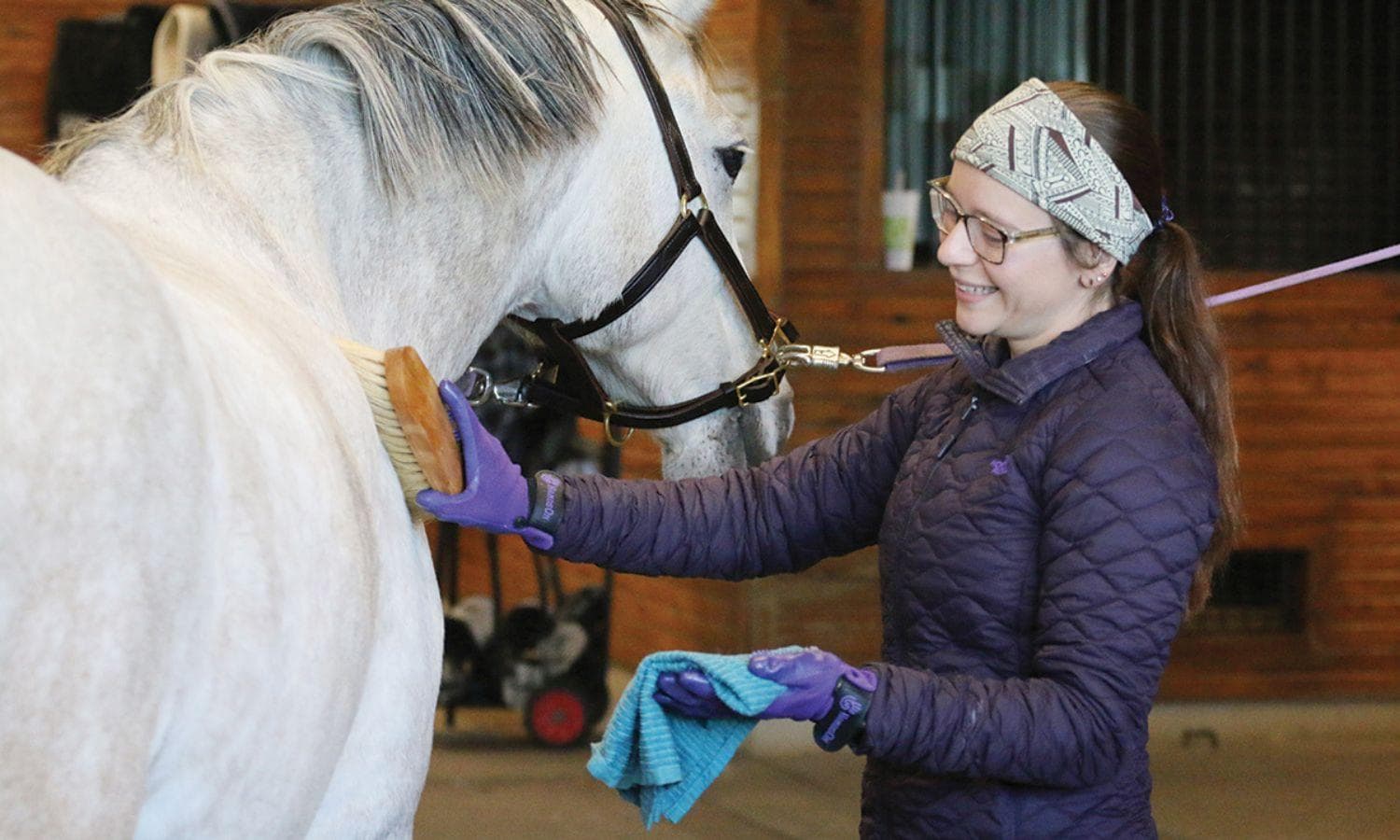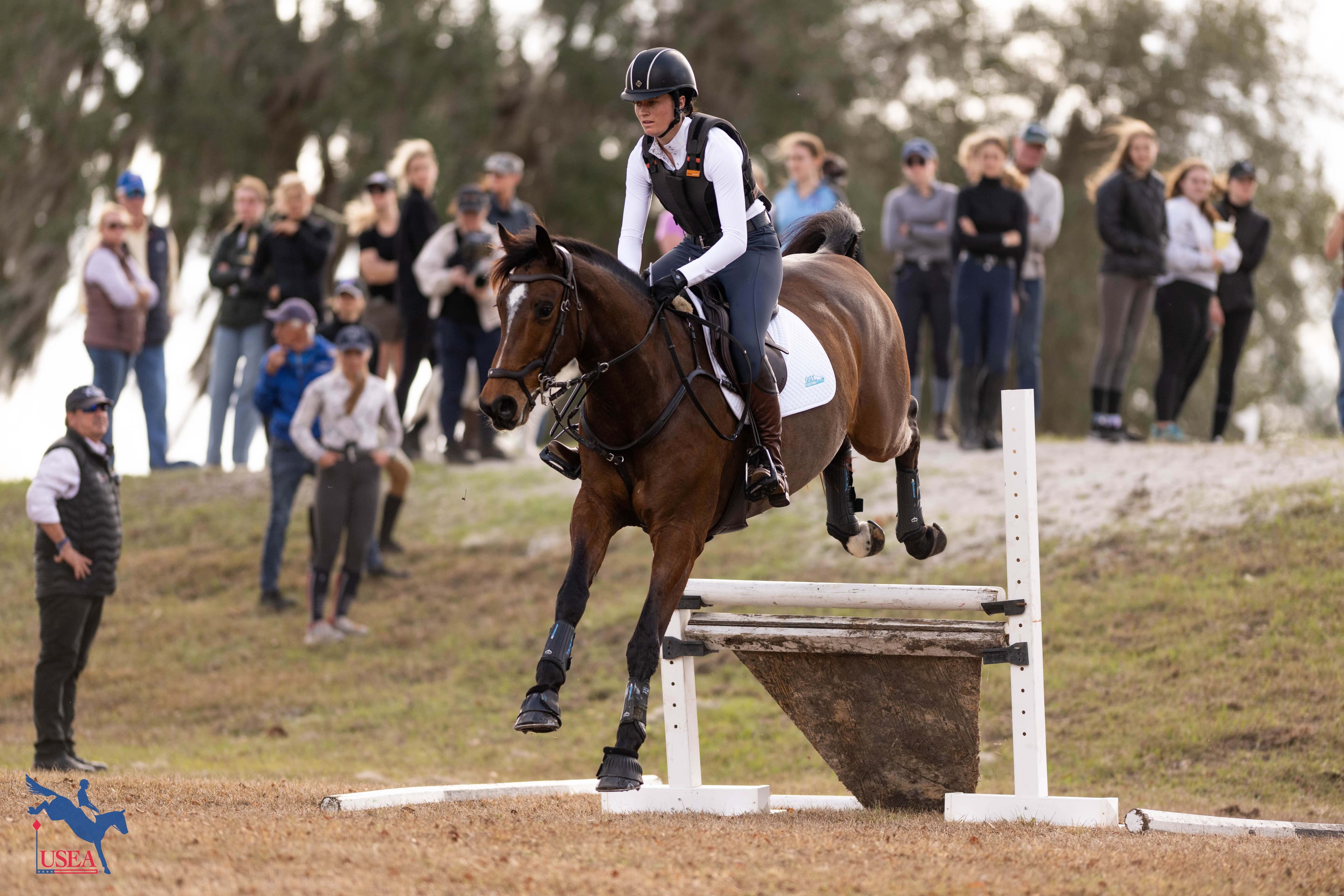In Support of the Classic Three-Day Event
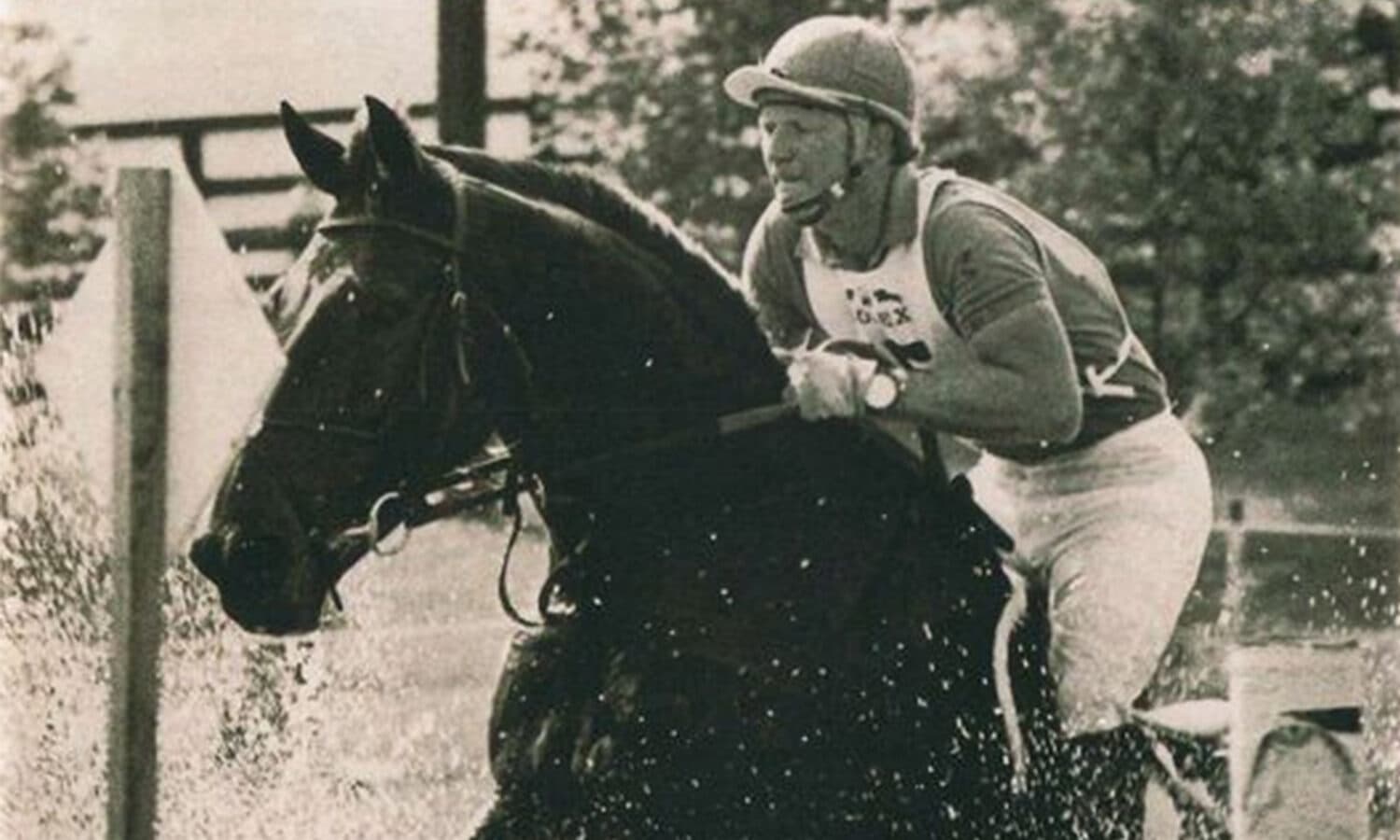
This article originally appeared in the Volume 34 (2005), Issue 2 issue of Eventing USA magazine.
There has been a lot of discussion recently about the two formats for our sport, Classic and Olympic (short). I am sure many USEA members are scratching their heads right now and asking, “Which format is right for me?” I am not sure how you are going to answer that question, but for me the decision is already made. I have always believed in the Classic format, and recent events regarding the change in the format for the Olympic Games have not caused me to change my mind. My reasoning is pretty simple. I got into this sport a long time ago because I wanted to learn as much as I could about horses, and the Classic event is the best test of horsemanship that has ever been devised.
No other equine competition covers such a range of training, asks as many questions of the horse and rider, or requires such a deep knowledge of the horse as does the Classic. The Olympic format has already produced examples of technical skill that fascinates horse lovers, and as the years go by we can expect this trend to continue. Yet in the future I will always feel sorry for these riders, knowing that they have not truly been tested, in the way that winners of a Classic event have been tested. The Olympic format is a test of technical skill, but the Classic is the test of “the complete horse and rider.”
Why is the Classic the complete test of horse and rider while the Olympic format is not? The Classic format tests endurance and speed in ways that are not found in the Olympic format. I have always maintained that Classic eventing is not merely a test of training, but of character. Like Vince Lombardi, I think that “Fatigue makes cowards of us all.”
Year after year, my students tell me of the fierce sensation of achievement they feel as they gallop across the finish line of a Classic, and of the overpowering surge of affection and appreciation they feel for their horse. That is the way you are supposed to feel when you and your horse prove that you are indeed the complete horse and rider.
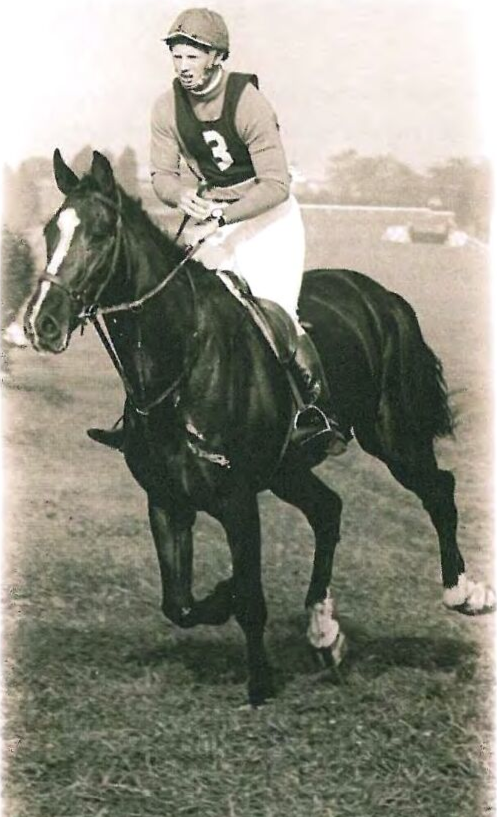
I keep talking about this complete stuff, so what do I mean? I’ll give you some examples. Think about what your horse has to do physically, in order to compete. He has to be able to slow canter with a nine-foot stride on an imaginary balance beam as he comes down the center line, then 24 hours later he has to take a 20-foot stride at the gallop over ground that many times he has never seen before, while he disdainfully brushes the fences behind him. His job is not done at the end of the steeplechase, because he will within the hour gallop over cross-country fences that are fixed and imposing in nature. He is such a hardy, tough, indomitable creature that he refuses to let fatigue get the better of him, and indeed is still pulling us as we reach the finish line. He must then return for an entirely different form of jumping, which will examine his gymnastic abilities after some serious exertion the day before. And all this just tests his physical powers! What about your horse’s mental qualities?
He has to display an almost Zen-like relaxation for the dressage, even when he is in peak condition. He needs the warrior ethic of a fearless warhorse of old during the speed and endurance tests, but he must not become so brave as to forget the dressage you have taught him. He must walk into the show jumping phase with the understanding that while you wanted him to brush through the fences on the steeplechase, you now want him to avoid these rails at all costs, and to perform with the cool detachment of a surgeon. All these qualities seem contradictory, yet time after time, we see horses come to understand what we want of them, and to combine all these qualities into one superlative package. Is it any wonder that when horses like Winsome Adante, Custom Made, or Prince Panache, or Molokai, or Out and About, or any of our equine stars walks by, we stop and stare? We stop and stare, because we know we are in the presence of greatness. Henry Kissinger said that “Greatness is so unusual that it takes getting used to.” We should consider ourselves lucky to be surrounded by horses such as these, and to have a sport that produces them.
What kind of rider does it take to train and ride these marvelous creatures? The complete horse can only be ridden and trained by the complete rider. The range of physical riding skills you will need is phenomenal. To take just one example, consider the different types of techniques you will need to jump the different types of obstacles involved in the Classic. Your approach to a steeplechase fence has to be at a high rate of speed, certainly over 20 miles per hour. Your desire to be accurate about where your horse will step in front of a soft steeplechase fence is far outweighed by your desire to maintain your pace and rhythm.
The speed for the cross-country phase is slower than the steeplechase, yet speed is still at a premium. You have to make split-second decisions regarding whether it is better to be accurate or fast over fixed obstacles. The best riders are both, while those who are merely fast are a danger to themselves and to their horse.
You must then be able to place your horse’s stride carefully for the show jumping phase. A mistake of six inches in the placement of your final stride before a four-foot sent of planks on flat cups can make an enormous difference in your final placings. And again, these are just the physical skills that you need to ride a Classic horse well. What about the mental skills?
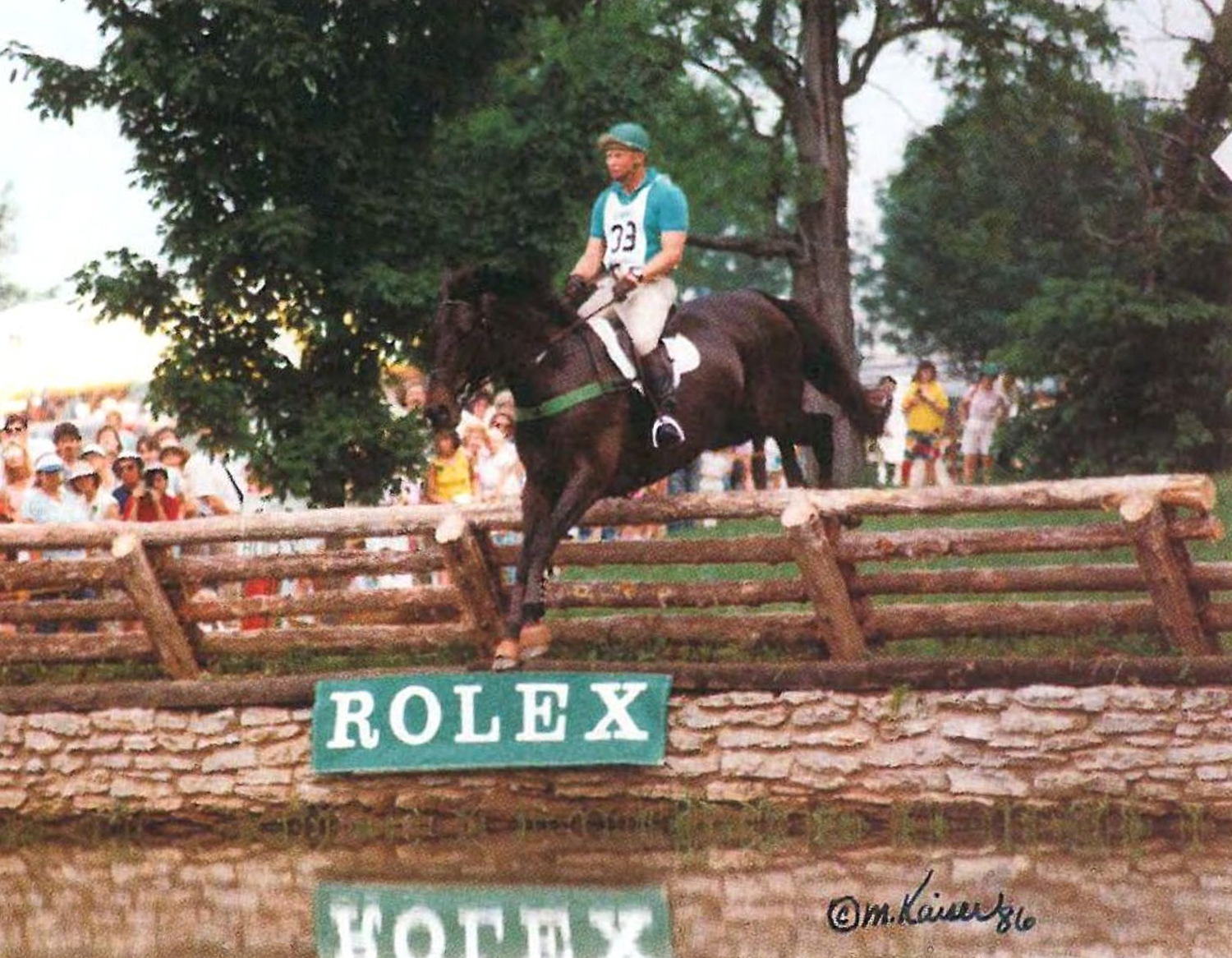
I have always thought that the complete rider is equal parts dressage guru, bucking bronc rider, and two-story cat burglar. Forget about scoring well for a moment, and remember that you need the dressage to even be able to ride a Classic horse, especially once he has reached peak fitness. The bucking horse analogy applies both to the strength and balance you need to stay on your horse during the cross-country, and to the sheer, rock-hard, unshakable physical courage it takes to throw your leg over a Classic horse. I spoke earlier about this event being a test of character. This courage is part of what I mean. And the two-story cat burglar? What’s that about? You need utter self-confidence and composure as you canter down to the last combination in the show jumping, knowing that your timing and accuracy will determine whether you win or lose.
But I’m not done yet. In addition to all the physical and mental skills we talked about earlier, the complete rider is responsible for producing his or her horse in peak condition. This means that you must have a profound understanding of exercise theory, you are a pretty good equine nutritionist, and you have developed an unusual feel for your horse’s physique and his psyche.
If you go back over my list for the complete horse and rider, you could be forgiven for saying, “Oh my goodness, my horse and I are nowhere near being like this!” My reply would be, “None of us are, but we are certainly interested in working toward this idea, and in improving our horse and ourselves as we go along.” Half the fun in training horses for the Classic format is bringing your horse back to the same event six months or a year later and measuring your progress. I am as competitive as most riders and trainers, but in the final analysis I agree with Bert de Nemethy, “A good feeling after the round is better than any ribbon.”
I like all parts of the Classic, but one of my truly favorite parts is the vet inspection. There is a moment when these horses walk up to be inspected, stand in front of the Ground Jury, look out over the crowd, and show us the look of eagles. I have seen this look all my life, and I have wondered why we see it so often in Classic event horses. I think that look is not one of arrogance, but of knowledge. These horses know what they can do, and they are not afraid of anything except doing their best.
If you are a true horseman, you will get goosebumps when you see it, and you will vow to improve your skills, to deepen your knowledge, and to improve your technique, so as to be worthy of being around these four-legged heroes.
About Jim Wofford
Jim Wofford is an eventing legend with an impressive number of medals to his credit: three Olympic (two team silver and one individual silver), two World Championships (individual bronze, team bronze), and one Pan American (team gold). For more than two decades, at one time or another, he has coached practically every rider who has represented the U.S. in competition.
About the USEA Classic Series
The USEA Classic Series keeps the spirit of the classic long format three-day events alive for Beginner Novice through the Preliminary levels. Competitors can experience the rush of endurance day, including roads and tracks, steeplechase, the vet box, and cross-country, as well as participate in formal veterinary inspections and educational activities with experts on the ins and outs of competing in a long format three-day event. Riders who compete in a USEA Classic Series event during the year will have the chance to win a variety of prizes at the events from USEA sponsors. Click here to learn more about the USEA Classic Series.
The USEA would like to thank Bates Saddles, C4 Belts, FLAIR, FITS, SmartPak Equine, Parker Equine Insurance, and Stackhouse & Ellis Saddles for sponsoring the USEA Classic Series.
Did you enjoy this article? Want to receive Eventing USA straight to your mailbox? Members receive Eventing USA as part of their USEA Membership or you can purchase individual issues from Shop USEA.


